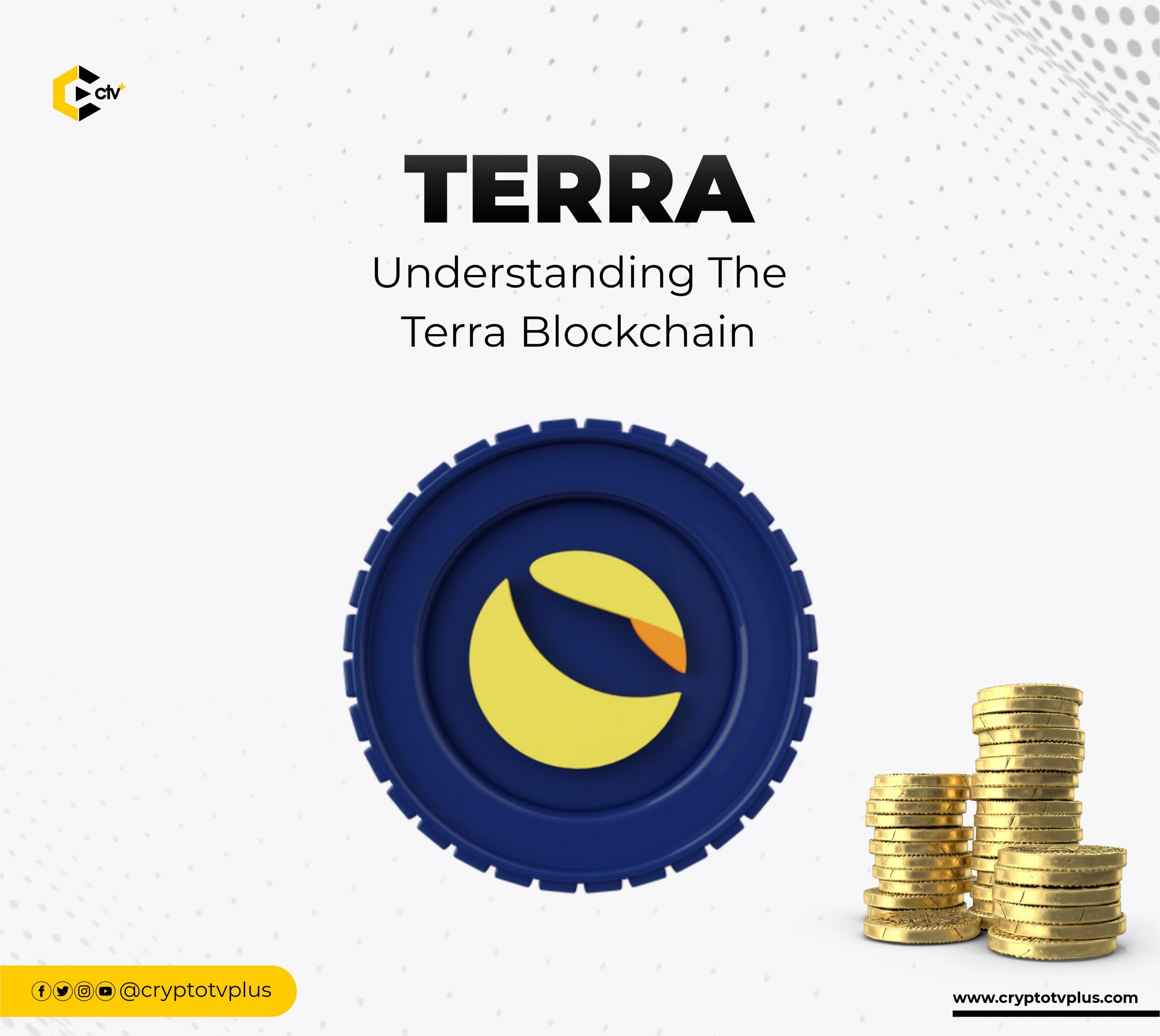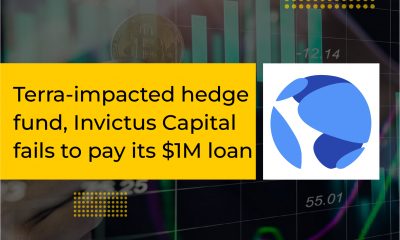FEATURED
Understanding the Terra Blockchain

Terra, the second-largest Decentralized Finance(DeFi) blockchain(after Ethereum) is an open-source public blockchain protocol for algorithmic stablecoins. It enables the creation of fiat-pegged stablecoins that can be spent, saved, traded, or exchanged on the Terra blockchain. In this article, we are going to delve into the basics of this auspicious blockchain.
What Is Terra?
Created by start-up Terraform Labs and its co-founders Do Kwon and Daniel Shin in 2018. As we said earlier, Terra is an open-source blockchain payment platform for algorithmic stablecoins, which are cryptocurrencies that track the price of currencies or other assets.
The Terra protocol creates stablecoins that consistently track the price of any fiat currency (a government-backed currency such as the American Dollar- $USDC or Nigerian Naira- $E-Naira). The blockchain consists of two main cryptocurrency tokens- Terra and Luna .
Terra: These are stablecoins that track the price of fiat currencies and are named after them. For instance, the base Terra stablecoin tracks the price of the IMF’s Special Drawing Rights and is named TerraSDR or SDT. Other Terra stablecoin denominations include TerraUSD (UST), which tracks the U.S. dollar, and TerraKRW (KRT), which tracks the South Korean won. Users mint new Terra by burning Luna.
Luna: It is used for governance and mining. Luna, ranked as the number 9 cryptocurrency in the world by Coinmarketcap is the Terra protocol’s staking token that absorbs the price volatility of Terra stablecoins.
Users stake Luna to Terra blockchain miners (validators), who record and verify transactions on the blockchain and receive rewards from transaction fees as compensation. As usage of Terra grows, Luna’s worth increases as well.
How It Works
Since the core value of stablecoins is derived from the stability of the price peg(fiat), thereby avoiding the volatility associated with cryptocurrencies, the Terra protocol maintains the price of the Terra stablecoin by ensuring that supply and demand for it are always balanced. Luna is the irregular counterforce to the Terra stablecoin and absorbs its volatility.
To illustrate better, let us imagine that the entire Terra economy consists of a Terra pool and a Luna pool. To maintain Terra’s price, the Luna supply pool adds to or subtracts from Terra’s supply; users burn Luna to mint Terra and burn Terra to mint Luna. This is achieved by the protocol’s algorithmic market module, which incentivizes the minting or burning of Terra through Arbitrage opportunities.
Arbitrage
The Terra protocol’s algorithmic market module enables atomic swaps between Terra and Luna, and between different Terra stablecoin denominations. Similar to a market maker, the market module ensures that there is a readily available and liquid market for the protocol’s assets, with stable prices and fair exchange rates between them.
The market module enables users to always trade 1 USD worth of Luna for 1 TerraUSD (UST), and vice versa, which incentivizes users to maintain the price of Terra as follows:
If 1 UST is trading at USD 1.005 (i.e., above the USD 1 peg), users can use the market swap feature of Terra Station, which is Terra’s native platform for wallet, swap, governance and staking functions to trade 1 USD of Luna for 1 UST. The swap will result in burning 1 USD of Luna and minting 1 UST.
Since 1 UST is currently trading at USD 1.005, users can sell the 1 UST resulting from the swap for USD 1.005, pocketing the difference of USD 0.005. As multiple users engage in this arbitrage activity, the UST pool continues to expand, generating downward pressure on the UST price until it reaches the USD 1 peg.
Consider the reverse situation in which 1 UST is trading at USD 0.995 (i.e., just below the USD 1 peg). In this case, users can buy 1 UST for USD 0.995, and then use Terra Station’s market swap feature to trade 1 UST for 1 USD of Luna.
The swap will result in burning 1 UST and minting 1 USD of Luna, generating a profit of USD 0.005 for the user. As this arbitrage activity continues, the UST pool continues to shrink, generating upward pressure on the UST price until it reaches the USD 1 peg.
Consensus Algorithm
According to its whitepaper, Terra operates on a Proof of Stake model, where validators verify transactions according to how many coins they hold. Proof of stake supporters say it is significantly less energy intensive than other models and has less of an environmental impact.
Luna holders are granted governance rights and voting power for the protocol, since Luna is Terra’s native token. Terra Consensus Algorithm would be delved into subsequently.
Read Also
Understanding Ethereum Smart Contracts, dApps & Transactions
Understanding Solana, it’s Proof of History & Smart Contract
Terra’s TPS
In the crypto context, transactions per second (TPS) refers to the number of transactions that a network is capable of processing each second. The Terra blockchain technology allows up to 10,000 transactions per second (TPS) and with a transaction time of 2 seconds. In contrast, Ethereum processes 15-30 transactions with a transaction time of over 1 minute . Furthermore, the transaction costs on this network are very low compared to other ‘big name’ blockchains.
Where To Buy & Sell Luna
Binance
Binance is one of the largest and most popular cryptocurrency exchanges in the world. The benefits of purchasing LUNA here is that traders benefit from the lower exchange fees than competing exchanges, and the increased liquidity enables traders to buy and sell quickly to take advantage of market moving news.
Gate.io
Gate.io was established in 2013, while it is not one of the most well known exchanges, they offer a reputable trading platform with an easy to use interface for beginners while still maintaining robust and advanced charts for various types of skill levels including technical traders.
They have a large number of altcoins including LUNA and they are often the first exchange to add new tokens. Best of all, they have a strong stance against any type of market manipulation.
Other platforms where Luna can be bought/sold are Kucoin, OKEx, Huobi Global and a few others.
What do you think of this article? Let’s hear from you in the comment box!

























Pingback: Understanding the Terra Blockchain by Marvelous Akpere – CryptoTvplus Events: NFT, DeFi, Bitcoin, Ethereum, Altcoin Events